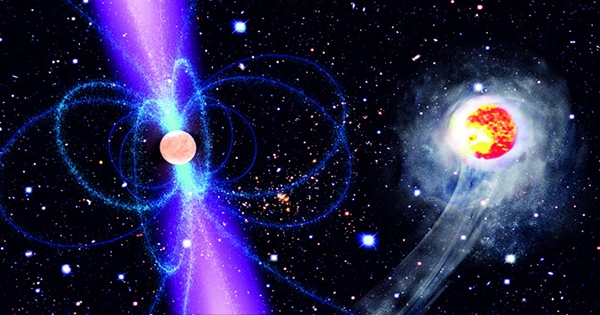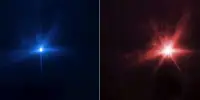Pulsars produce extremely bright light. When a pulsar is orbited by a companion star, the radiation from the pulsar can practically vaporize the poor partner star. The universe of Black Widow pulsars is ruthless, and researchers have identified one with the shortest duration yet. The findings were published in the journal Nature. ZTF J1406+1222 is the name of the prospective black widow star system. The system consists of three objects, one of which circles the pulsar far away. The other is a brown dwarf so near to the pulsar that it calls into question conventional theories about how these systems form. The black widow binary has a period of only 62 minutes, which is much less than the previous record of 75 minutes.
“This 62-minute orbit is amazing because we don’t understand how the stars could get into such a tight orbit,” said Dr. Kevin Burdge, a postdoctoral fellow at MIT who conducted the research while at Caltech. “The pulsar’s process of ablating its partner should actually separate them. This is stretching the limits of what we previously thought was feasible.” Observations in visible light were used to find the system. The scientists saw the system brightness change by a factor of 13 using the Zwicky Transient Facility (ZTF) equipment at Caltech’s Palomar Observatory. Follow-up studies with NASA’s Chandra X-ray Observatory will potentially provide further details and establish the system’s composition.
“Our data suggests we’re dealing with a black widow binary, but it may be something completely else,” said Dr. Burdge. “The population of black widows we’ve seen so far with other wavelengths of light, such as X-rays, gamma rays, and radio waves, is definitely skewed,” explains Burdge. “Now we have a new lens through which we can see these systems,” says the researcher.
The telescope was excellent enough to discern variations in the system brightness, but it couldn’t tell the difference between the small pulsar – which has more mass than the Sun packed into a sphere with a diameter of barely 20 kilometers (12.4 miles) – and the much larger brown dwarf. They view the brown dwarf’s heated surface and can tell the difference between the hotter “day” side that faces the pulsar and the somewhat colder “night” side.
The third-star circles the pair once every 10,000 years and is 600 times further away than the Earth is from the Sun. Because the system revolves in the galactic halo and the team believes it comes close to the galactic core, more research might provide information beyond black widow pulsar physics.















